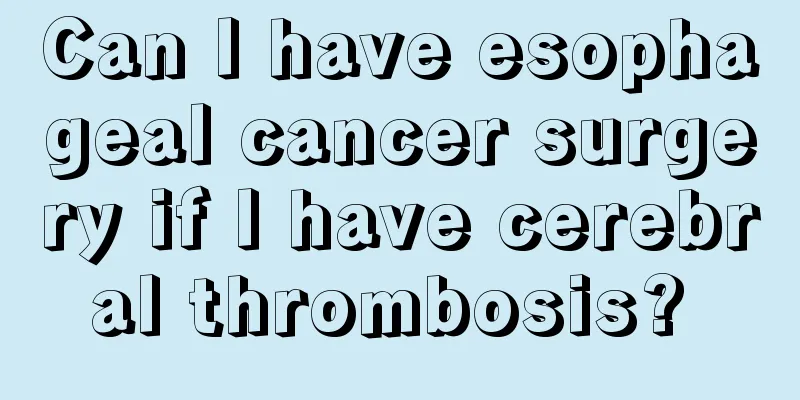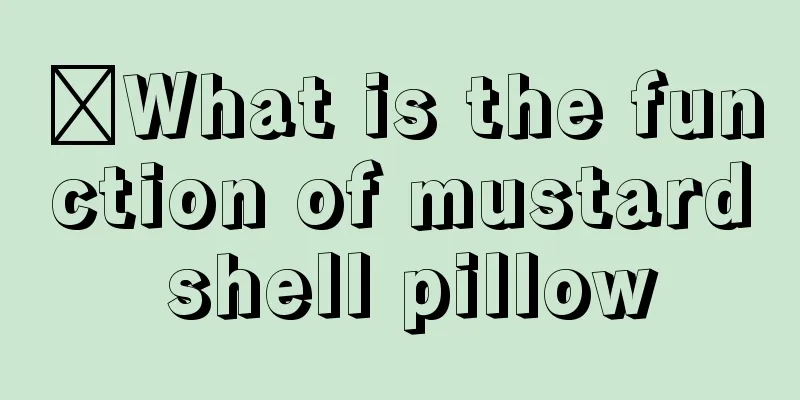How to treat anal fistula? Surgery is necessary

|
Once anal fistula is discovered, surgical treatment is required. Only surgical treatment can completely cure the disease. Common treatments include thread hanging therapy and anal fistula incision. After the operation, you must take good care of the wound, keep the wound dry to avoid infection, and pay attention to your diet. (I) Thread hanging therapy This is a slow incision method for the fistula. It uses the mechanical effect of rubber bands or medicated thread (medicated thread also has drug corrosion effect) to cause blood circulation obstruction in the tissue at the ligature, gradually compressing the blank; at the same time, the ligature can be used as a fistula drainage material to discharge the exudate in the fistula and prevent acute infection. During the process of surface tissue cutting, the underlying wound surface gradually begins to heal. The biggest advantage of this method of gradually cutting the fistula is that although the anal sphincter is cut, it will not change position due to excessive sphincter contraction, and generally will not cause anal incontinence. This method is suitable for simple straight fistulas with low or high internal and external openings within 3 to 5 cm from the anus, or as an auxiliary method for incision or resection of complex anal fistulas. (ii) Anal fistula incision The surgical principle is to completely cut open the fistula and fully remove the scar tissue on both sides of the incision to ensure smooth drainage and gradual healing of the incision. This method is only applicable to low-position straight or curved anal fistulas. Here’s how it works. 1. Probe the internal opening correctly. The operation of finding the internal opening is the same as that of the hanging thread therapy. After finding the internal opening, pull the probe out of the anus. If the fistula is bent or has branches, the probe cannot be inserted into the internal opening. Inject a small amount of 1% methylene blue solution from the external opening to determine the location of the internal opening. Then use a slotted probe to explore from the external opening, gradually cut the tract open, and explore until the internal opening is found. If the internal opening cannot be found after careful exploration, the anal sinus suspected of having a lesion can be treated as the internal opening. 2. Cut open the fistula tract and fully remove the marginal tissues, cut open all the superficial tissues of the fistula tract, from the external opening to the internal opening and the corresponding anal sphincter fibers. After the fistula is opened, check for branches, and if found, they should be opened. After the fistula is completely incised, the rotten granulation tissue will be scraped clean. Generally, there is no need to remove the entire fistula to avoid excessive wound size. Finally, trim the wound edges to make it into a "V" shape with a small bottom and a large mouth, so that the deep part of the wound can heal first. 3. When cutting off the anal sphincter, the relationship between the position of the probe and the anorectal ring should be carefully understood during the operation. If the probe enters below the anorectal ring, although the fistula and most of the external sphincter and the corresponding internal sphincter are completely cut open, anal incontinence will not occur because the puborectalis muscle is preserved. If the probe enters the rectum above the anorectal ring (such as suprasphincteric anal fistula, extrasphincteric anal fistula), fistula incision should not be performed, and thread hanging therapy or thread hanging staged surgery should be performed. In the first stage, the fistula tract below the ring is incised or removed, and the fistula tract above the ring is hung with a thick silk thread and tied tightly. The second stage of surgery is to wait until most of the external wounds have healed and the anorectal ring has been adhered and fixed, and then the anorectal ring is cut open along the hanging line. After the fistula is incised, the granulation tissue on the posterior wall can be scraped off with a curette and generally does not need to be removed to reduce bleeding and avoid damaging the sphincter on the posterior wall. The excised fistula tissue should be sent for pathological examination. 4. Wound treatment. Postoperative wound treatment is often related to the success or failure of the operation. The key is to keep the wound healing gradually from the base to the surface. Change the dressing once a day, preferably after defecation, and gradually reduce the amount of dressing in the wound until the wound in the anal canal is healed. Performing a digital rectal examination every few days can dilate the anal canal and prevent bridge-shaped adhesions and false healing. |
<<: Fascia suspension removes wrinkles and keeps you young forever
>>: What is anal leakage? Be alert if you have pus and pain
Recommend
Are colored glass cups poisonous?
Colored glass cups are quite common in our daily ...
What are the treatments for colon cancer
The most common treatments for colon cancer are c...
Benefits of long walks
In fact, not all exercise is strenuous. Sometimes...
Can lung cancer be cured in the mid-stage
Can mid-stage lung cancer be cured? 1. If you wan...
Is it poisonous to soak cigarette butts in water?
Most people are very disgusted with smoking, beca...
Fire needle treatment of flat warts
Flat warts are a skin disease caused by a viral i...
Is it normal for teenagers' knees to make noises when they squat and stand up?
Nowadays, some teenagers have some crackling nois...
Cervical cancer is likely to be caused by marital factors
Cervical cancer is likely to be caused by marriag...
Liver cancer patients must pay attention to its common symptoms
Liver cancer is a relatively common tumor disease...
What are HeLa cells?
HeLa cells are an immortal cell line widely used ...
The type of colon cancer can help patients better judge their condition
In recent years, the incidence of colon cancer ha...
How to boil Chinese medicine for the best effect
Among the drugs for treating diseases, traditiona...
What organ is on the left side of the belly button
The belly button is the mark left by the shorteni...
How to treat non-primary liver cancer? 4 treatment methods for non-primary liver cancer
When treating non-primary liver cancer, patients ...
Early brain cancer blood test diagnosis
There are many types of early brain tumor diagnos...









